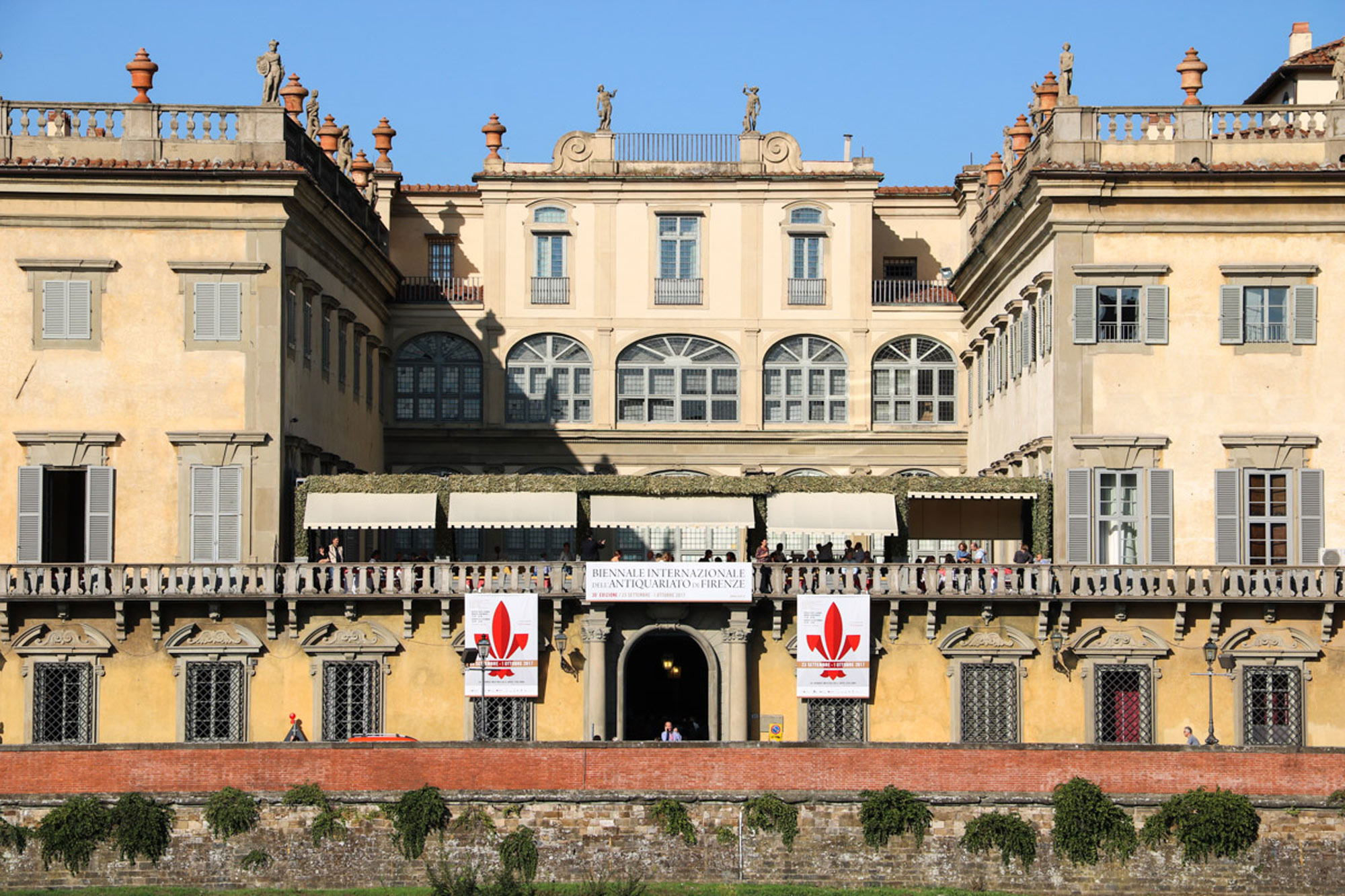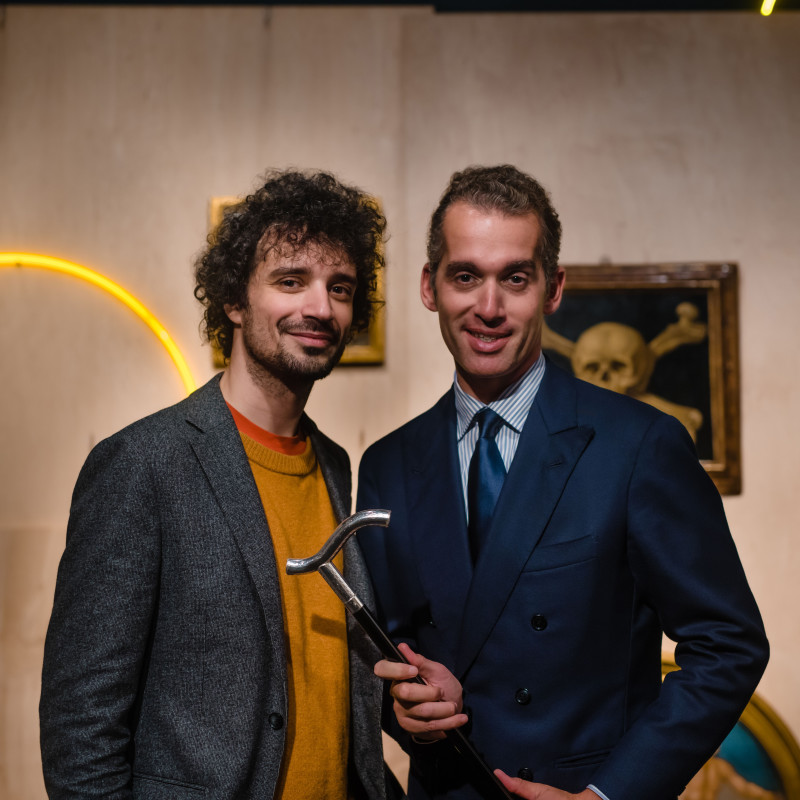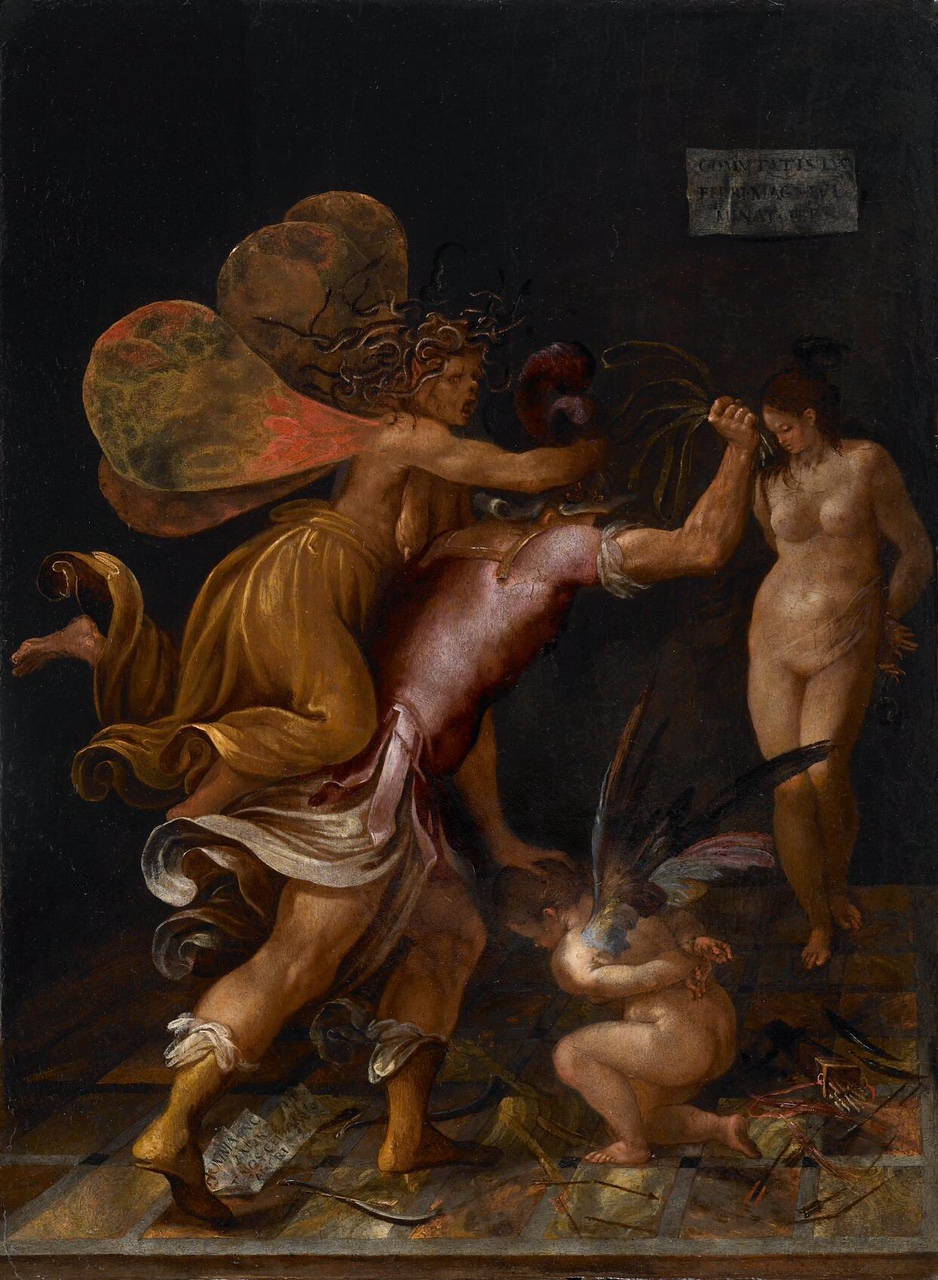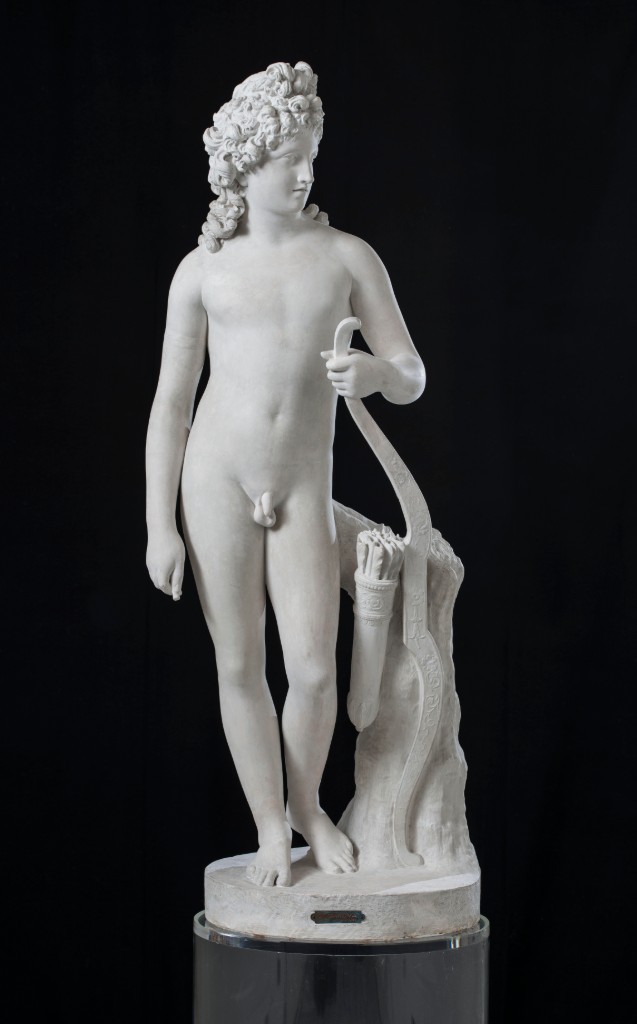Monika OSVALD
BIAF, the International Biennale of Antiquities in Florence, 21 – 29 September, Florence, Palazzo Corsini
Reviews and Presentations, 18 January 2020

1. Palazzo Corsini, Florence
BIAF, the International Biennale of Antiquities in Florence, is the most important antiquarian art fair in Italy. The Florence biennale began in 1956, when the brothers Mario and Giuseppe Bellini enclosed in a single venue, then it was Palazzo Strozzi, more than a hundred selected art dealers. They allowed buyers, curators or simple enthusiasts to see closely what the market offered the best. They were therefore the precursors of a system that was then adopted throughout the art world and still valid today. Plenty of novelties were introduced since then, the venue has changed, from 2001, the fair is held in Palazzo Corsini, and in 2015 the new Secretary General, Fabrizio Moretti, has been appointed.
Despite his young age, Fabrizio Moretti, is one of the most prominent antiquarian, as well as a member of the executive committee of TEFAF in Maastricht, the exhibition committee for Frieze Masters in London, and of the scientific committee of the Uffizi Galleries in Florence. Son of the prominent art dealer Alfredo Moretti, Fabrizio founded Galleria Moretti in central Florence in 1999, focusing on Old Masters. Just some years after, in 2005, he opened Moretti Fine Art in London's New Bond Street, relocating after to St James's. He expanded his business in Monaco in 2017, with the opening of a third gallery space, overlooking the Place du Casino.
Regarding the Biennale, Moretti is a great advocate of the opening towards modern and contemporary art, but with the aim to attract collectors, apparently more interested in their own time, to the timelessness of old masters. To give even more freshness to both, old masters and his name, he decided to collaborate with Fabrizio Moretti, the musician with the same name, from the New York band The Strokes. They organised a joint exhibition, Fabrizio Moretti x Fabrizio Moretti | In Passing, that was on display at the Sotheby´s New York on 15 - 18 December 2019. It consisted of more than twenty paintings and statues of ancient masters from the stock of Moretti gallerist, in an interactive installation by Moretti musician, which led viewers to look at works in non-traditional ways, such as kneeling, or giving them an unusual glow with neon light effects.

2. Duo Moretti
Returning to the biennale, the thirty-first edition was held from September 21 to 29 at the Palazzo Corsini. Of the 77 national and international galleries, specialized in the most diverse artistic disciplines participating in fair, 16 were at their first experience at BIAF. Following the trends, the fair has opened to modern and contemporary art, with the time limit in 1990. The International Biennale of Antiques in Florence celebrated 60 years of activity (1959-2019) by promoting the first Florence Art Week, a week of events, exhibitions, performances and meetings that involved all the Florentine galleries, from ancient art to contemporary.
Among the exhibitions, the Galleria Poggiali, a new entry at the fair, presented works by Gilberto Zorio and Enzo Cucchi. The Galleria Bacarelli Antichità organized, in collaboration with the Galleria Botticelli Antichità and the Galleria Continua from San Gimignano, a display that combined Renaissance and Neoclassical works with pieces by Michelangelo Pistoletto, Anish Kapoor and Daniel Buren. "Secondo Novecento according to Roberto Casamonti" was the subject of the exhibition at the Palazzo of Bartolini Salimbeni. All ninety masterpieces from the time-period 1960-2000, including the works of Tony Cragg, Jean-Michel Basquiat, Alighieri Boetti, are part of the collection of the famous owner of the gallery Tornabuni Art. In the splendid Medici gardens, the Ancient and Renaissance sculpture joined contemporary art with the exhibition "Tony Cragg in Boboli".
Another interesting innovation of the thirty-first edition of BIAF was the close collaboration between the event and Google Arts & Culture. Through the Google Street View technology, it was possible to make a 360-degree virtual tour of the visit path of the Biennale through the spaces of Palazzo Corsini.
The peculiarity of the Florence biennale are the prizes for the most outstanding works of art in several categories, which were on display on stands. The Ugo Pierruci Prize for Painting was awarded to the work of Daniele da Volterra, Madonna with Child, San Giovannino and Santa Barbara, from 1548, exhibited by Mehringer-Benappi. At the fair, it was bought by the Uffizi Gallery for a sum of around two million euros. The Prize for Sculpture was delivered to Altomani & Sons for the San Giovanni Battista, a terracotta sculpture by the Master of San Giovannino, now identified with Benedetto da Rovezzano.
With the Ronald S. Lauder Prize for Decorative Arts and Design has been distinguished the armor belonging to the Count Galezzo d´Arco, made in the workshop of Tommaso Negroni in 1445-1450 and exhibited by Peter Finer. In the same discipline, three Mentions of merit were also awarded, to Alessandra Di Castro for the golden rose made by Bartolomeo Bulgari for Pope Pio IV Medici in 1564, Iotti Antichità for the pair of Genoese consoles from the 18th century and Dario Ghio for a particularly representative collection of ancient corals.
In addition, the Lorenzo d'Oro Prize was given to Antonio Paolucci - art historian, former Minister for Cultural and Environmental Heritage, Director of the Vatican Museums and Superintendent for the Florentine Museums - for his commitment to the dissemination and promotion of the Italian art in the world.
To be coherent, let´s propose my subjective choice, justified more by the exceptional content than by the stylistic quality. Galerie Canesso presented at the fair a relatively small oil painting on wood panel (43 per 34 cm), The Chastisement of Love (Amore castigato). The author of the painting has been recently identified as the Mantuan painter Camillo Mainardi (Guazzalo between 1544 and 1549 – Castiglione 1608), who worked for the Gonzaga family. At the beginning, he painted for Orazio Gonzaga between 1576 and 1585, and then for Guglielmo Gonzaga, Duke of Mantua, for whom he decorated some of the rooms in his palace in Goito, from 1586 to 1587. In early 1597, Mainardi is recorded as employed by Countess Giulia Gambara in Brescia.

3. Galerije Canesso: Camillo Mainardi, The Chastisement of Love
The central figure, seen from behind, and wearing a helmet and armour, is recognizable as Mars, beating Cupid, bound and kneeling figure at his feet. Mars is tormented by a monstrous female figure with snakes in her hair, and coloured wings, possibly one of three Furies. In the background, we see a nude female figure, probably Venus, with tied hands and in a submissive pose. At Mars’ feet, an inscription on a sheet illuminate the bizarre depiction: “OMNIA VINCIT/ AMOR/ (E)T NOS CEDAMUS/ AMORI” (Virgil, Eclogues, 10, 69). Mars is whipping Cupido because guilty of having made him fall in love with Venus.
The iconography of this very special picture is not so easily decipherable, since the subject is somehow unique. In the Renaissance, we find innumerable depictions of the love couple Venus and Mars. Exceptionally some of them illustrate the punishment of Cupid, according to ancient examples, in which the mother, Venus, disciplines her son. Mantuan´s and Ferrara´s courts celebrated Amor, as we may deduce from the biographies of Isabelle d´Este or Lucrezia Borgia, and the poems of Pietro Bembo. Ménage á trois, in which the elderly spouse played the role of a jealous Vulcan, clearly did not cause excessive scandal.
However, times have changed in the late 16th century. Mars, in our portrayal, is punishing Cupid with all the fury, and thus saving his masculinity. The unsteady hand of a child is guilty of indulging the invincible god of war in the love desire. The woman in the background is so very helpless, that it is almost unlikely that the almighty goddess of love would be represented. She may be one of the unlucky celebrities who succumbed to Cupid's arrows and, as Ausonius tells us in the late-Latin poem Cupidus cruciatus, finally punished the unlucky child.
How problematic became Eros as a divinity of love desire, is quite evident from the picture Sacred Love and Profane Love by Giovanni Baglione (1566-1643): Archangel Michael is in the act of defeating little Eros, already lying on the ground with his broken arrows. Finally, we find the parallel to our painting. Bartolomeo Manfredi (1582-1622), another painter in Caravaggisti style, depicted Mars hitting blindfolded Cupid, with Venus on his knees intent on stopping lover´s fury.
Compared to the manneristic and baroque perceptions of Eros, the neoclassical depictions of the god of lust seem almost completely unproblematic. Gallery Robilant+Voena presented a plaster cast Amorino, conceived by Antonio Canova (Possagno 1757 – Venezia 1822). Amorino was made for John Campbell who was the first important Canova collector in England. The two met during the grand tour that the English nobleman accomplished in Italy, between 1783 and 1788.

4. Gallery Robilant+Voena: Antonio Canova, Amorino
In addition to the Amorino, Campbell commissioned to Canova the first version of Amore e Psiche, today in the Louvre in Paris, which however the English nobleman never managed to obtain, not being able to pay the large transport costs. The marble of the Amorino Campbell, carved by Canova between 1788 and 1790, was Canova's first work to arrive on British soil (today at Anglesey Abbey, Cambridgeshire, National Trust). On its arrival, in 1791, was welcomed with general enthusiasm. As usual, Canova made several plaster casts also from Amorino Campbell. The first ones were aimed for collectors who had helped him in his early years: Senator Girolamo Zulian, Prince Abbondio Rezzonico, but above all Senator Giovanni Falier.
Giovanni Falier (1710-1808) was one of the most esteemed patricians of his time, a senator and a member of the Council of Ten. It was he, who helped Canova in the early years, and he was responsible for the commission of Canova's first sculpture, Euridice, made in 1773, to which followed three years after Orfeo (both placed by Falier in the family villa in Asolo, now both in Venice, Museo Correr).
The plaster cast was exhibited in Naples in the exhibition Canova e l´Antico (Napoli, Museo Archeologico Nazionale, 28 March – 30 June 2019). This brings even more added value to the work, which is quite unique even without marketing and promotion.
BIAF: http://biaf.it/index.php?lang=it
Google Arts & Culture: https://artsandculture.google.com/exhibit/a-tour-of-the-xxx-international-biennale-of-antiques-the-ground-floor/bgJC7-g_3Q5GJQ
Author:
Monika Osvald
Ta e-poštni naslov je zaščiten proti smetenju. Potrebujete Javascript za pogled.
Quotation: Monika Osvald,BIAF, the International Biennale of Antiquities in Florence, 21 – 29 September, Florence, Palazzo Corsini, Bilten SUZD, 39/2 [18. 1. 2020], 2020 (http://www.suzd.si/bilten/prispevki/1578-bilten-suzd-39-2020-02[date of reading]).





